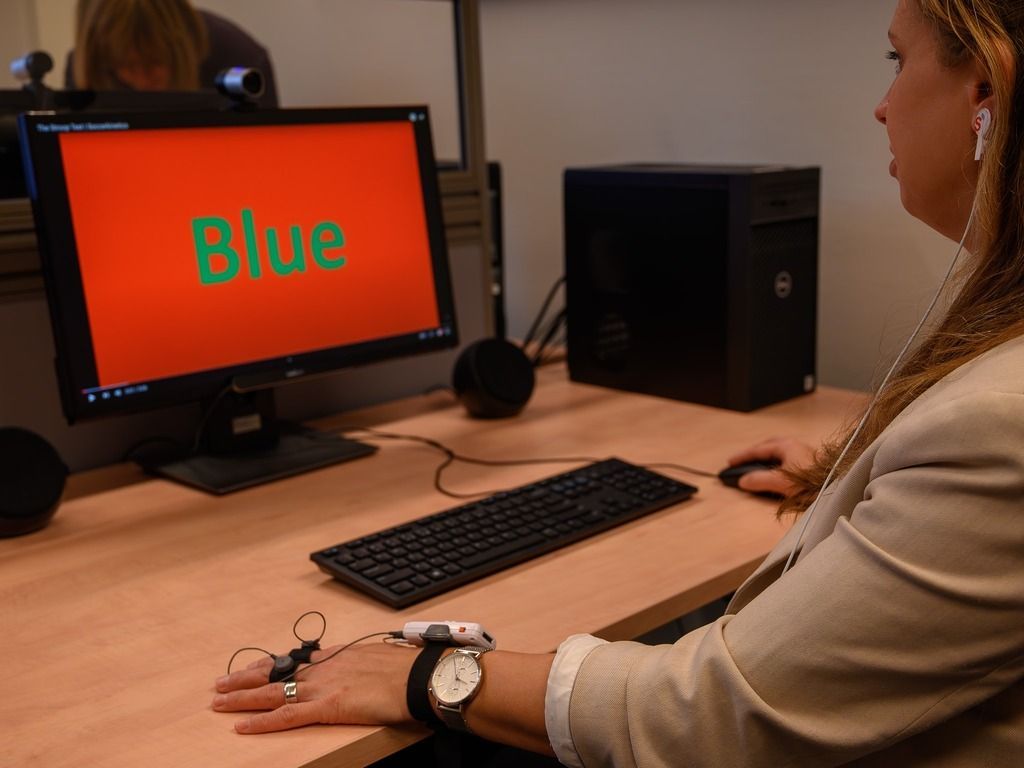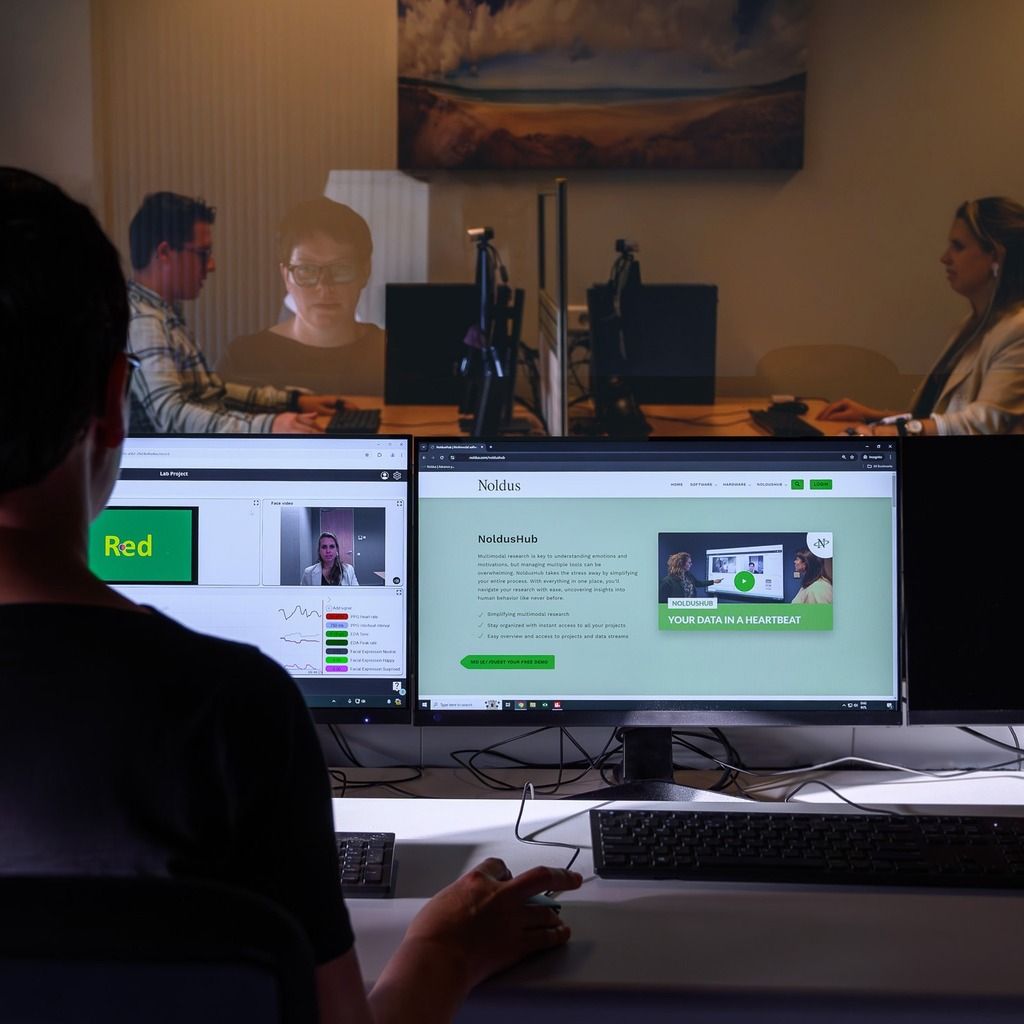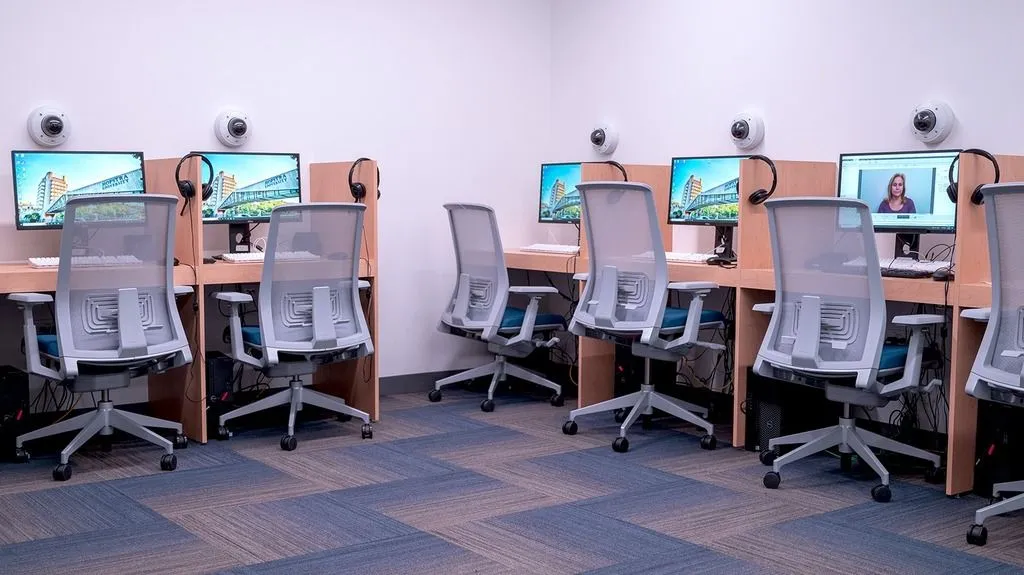What is cognitive load, and how does it help us understand human behavior?
By exploring cognitive load, researchers gain insights into how people process information, respond emotionally, and manage decision-making. How cognitive load and one of its most reliable indicators, pupil dilation, is crucial in human behavior research.
Posted by
Published on
Fri 13 Dec. 2024
Topics
| NoldusHub | Cognitive Load | Emotions | Measure Emotions | Methods And Techniques | Eye Tracking | Multimodal Research | Decision-making |

Ever wonder why some tasks leave you feeling mentally exhausted, while others seem easy and manageable? Cognitive load may hold the answer. Understanding cognitive load helps researchers see how people take in information, handle emotions, and make decisions while performing a task. The mental effort needed to complete tasks and learn effectively plays a big role in shaping how people act and make choices.
By measuring cognitive load, researchers gain insights into how people process information, respond emotionally, and manage decision-making. Let’s uncover how measuring cognitive load and one of its most reliable indicators - pupil dilation - can be powerful methods in human behavior research.
What is cognitive load, and why does it matter?
Think of cognitive load as the mental “weight” or effort required for your brain to process information. Like a workbench that can only hold so much, our minds have a limited capacity for juggling information. The more complex or confusing the task, the heavier the load becomes.
For human behavior researchers, measuring cognitive load can reveal when a person is reaching mental overload or when tasks are manageable, offering valuable clues about how people think and learn.
Using pupil dilation to measure cognitive load
How can we measure cognitive workload in a way that’s both accurate and non-invasive? One reliable method is pupil dilation: the automatic widening of pupils during mental effort. Pupil dilation is measured with eye-tracking devices that use near-infrared spectrum light to monitor changes in pupil size. This non-invasive method tracks dilation in real-time during tasks, linking cognitive load and emotional responses to specific stimuli.
Here’s how it works and why it’s useful for researchers:
- Cognitive demand: When we focus on something challenging, our pupils dilate as the brain increases mental effort. For researchers, this makes pupil dilation an indicator of cognitive load, especially during complex tasks or learning sessions.
- Emotional insight: Our pupils can also reveal emotional responses. If a person feels stressed, excited, or frustrated, these emotions show up in pupil dilation too. This helps researchers distinguish between pure mental effort and emotional reactions to a task.
- Decision-making challenges: Pupil dilation can signal moments when a person is struggling to make a decision. The more challenging or uncertain a choice, the more likely pupil dilation will reflect this extra mental workload.

Combining pupil dilation with multimodal tools for a full picture
For researchers studying human behavior, relying on a single indicator provides valuable insights. When paired with other measurements, it offers a fuller picture of the cognitive and emotional experiences underlying behavior.
If pupil dilation tells us when mental effort increases, then combining eye tracking with other physiological measurements can reveal the full story of how people think, feel, and respond. Measuring cognitive load doesn’t stop with pupil dilation alone.
Multimodal research
This approach, known as multimodal research, combines data from different sources, such as ECG (which measures heart activity), EDA (which tracks changes in skin conductance), and skin response sensors (which detect changes in emotional state).
Together, these tools allow researchers to capture real-time insights into what people are thinking, feeling, and how they’re engaging with tasks or stimuli. Here’s how these methods work together:
- Experiments and testing: Researchers often set up experiments to track how pupils change during certain tasks. By combining this data with heart activity from ECG, which indicates physical stress or arousal, or skin conductance from EDA, which reflects emotional or cognitive engagement, they gain a detailed view of cognitive and emotional responses to various tasks.
- Improving design and UX: In user experience (UX) research, understanding cognitive load helps designers make products that are easier to use. For example, tracking pupil dilation during interaction with an app can reveal which features cause mental strain. This data, paired with physiological responses like increased heart rate, helps refine designs for better usability.
- Psychophysiology in real- time: Pupil dilation is also used in psychophysiology, a field that studies how the body responds to mental processes. For instance, combining pupil data with skin conductance can show how stress levels change moment by moment during a task, offering insights into how cognitive load affects behavior and decision-making.
Effective tool for multimodal research: NoldusHub
Combining multiple types of measurements can be challenging, especially when you use several acquisition tools that must be calibrated and started. NoldusHub is a comprehensive tool designed to streamline multimodal studies, providing direct, pre-processed data on cognitive load and other measurements.
It allows researchers to collect and synchronize data from various sources, including eye-tracking devices, physiological sensors, and facial expression analysis, all within a single interface. By utilizing NoldusHub, researchers can:
- Integrate multiple data streams: Simultaneously record and synchronize data from eye tracking; like point of gaze and fixation, and pupil dilation, heart rate, skin conductance, and other physiological measures, providing a holistic view of cognitive load.
- Get direct cognitive load measurement: NoldusHub uses pupil dilation to measure cognitive load, automatically correcting for light intensity. This provides immediate, pre-processed cognitive load data, saving researchers time and effort in data analysis.
- Enhance data accuracy: NoldusHub ensures precise synchronization of all data streams, reducing the risk of errors and enhancing the reliability of findings.
- Simplify data management: With a user-friendly and intuitive interface, NoldusHub simplifies the setup, recording, and analysis processes. This allows researchers to focus more on their studies and less on technical complexities.
- Export their data: The software provides data files for each recorded modality, including cognitive load data, enabling detailed post-experiment analysis.

Why cognitive load research matters
Understanding cognitive load through tools like pupil dilation and multimodal measurements allows researchers to uncover how people think, feel, and act. These insights help improve learning environments, make technology more intuitive, and support better decision-making processes. Cognitive load is more than mental strain; it’s a key to understanding the mechanics behind our thoughts and actions.
Cognitive load isn’t just about mental strain. It offers a window into how we process thoughts, emotions, and decisions, allowing researchers to track cognitive effort as it happens.
New possibilities in human behavior research
By leveraging pupil dilation and combining it with other multimodal methods, researchers can explore human behavior with greater precision. These approaches open doors to new discoveries, offering deeper insights into how we learn, solve problems, and adapt to our surroundings.
NOLDUSHUB: Your data in a heartbeat
Discover how NoldusHub benefits your research, and why it is the best multimodal platform for you to use:
- Clean and easy to use interface
- Synchronization from the start
- Powerful data visualizations
Related Posts

The power of multimodal research in human behavior studies

Understanding human behavior at Hofstra's Behavioral Research Lab
